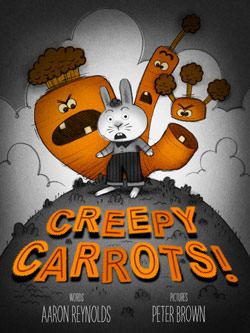When I asked a group of first
graders what they thought a person might mean by saying, “you eat like a bird,”
all four heads dipped down to the table. With hands in their laps, they bobbed
and “pecked” at imaginary seeds on imaginary ground. They were a bit surprised
when I opened Sandy Donovan’s book, Until
the Cows Come Home, illustrated by Aaron Blecha, and read page 26 where
they learned this idiom means to eat a small amount of food.

They were even
more surprised when they discovered how much a bird typically eats; a one-pound
bird is likely to eat about a pound of food each day. If my students actually
ate like birds, they would eat about 45 pounds before turning in tonight!
These facts may not be new to you,
but some of the information in the book was new to me. For example, did you
know the phrase “don’t let the cat out of the bag” began back in the Middle
Ages? I didn’t. According to Ms. Donovan, since cats were cheap and pigs were
expensive,
“Sellers
at marketplaces used cats wrapped up in fabric bags to try to trick buyers.
The buyers thought they were buying a pig. The sellers would take their
money and give them a bag with an animal squirming around inside.”
If they let the cat out of the bag
before they returned home, they would discover the secret.
Ms. Donovan’s book defines idioms
as “phrases that mean something different from what you might think they mean.”
After reading several examples, I turned to a page with an illustration of a
monkey clinging to a frustrated, freckle-faced boy and said, “The phrase, monkey on your back” is an____?” I
paused to let the kids finish the sentence and Hailey called out, “Idiot!” The
others agreed before I had a chance to correct her mistake.
Landen was so intrigued by the
illustration he decided to demonstrate how you might get a monkey off your back.
First he wrapped his arms around his body, then changed positions to spread the
fingers of one hand on his cheek and used his other hand to peel off the
fingers, one by one. He explained how he’d peel the toes off too, and then
twirl so the monkey would fly off. He
used excellent descriptive language as he expounded on the process and by the
time he finished, it was easy for the other students to understand the origins
of this idiom. I tuned back to the book and read,
“What does a
monkey have to do with an ongoing problem? Well, let’s think about it. If you
had a monkey on your back, it would be really hard to get it off, right?
Monkeys have those long arms. They could wrap their arms around your neck. You
might try to shake them off, but they’d cling on. . . That’s why people use the
phrase “monkey on your back” to refer to problems that won’t go away.”
Idioms are confusing to many
of my students and they are especially baffling to kids on the autism spectrum
who are very literal in their thinking. I remember one precocious sixth grade
student who had autism. After a few lessons on idioms, Alex came into my speech
room and said, “Did you notice, it’s
raining cats and dogs outside. I hope we can have lunch soon because, I’m
as hungry as a horse.” He was very
pleased with himself and I was happy as a
clam to hear him using the idioms appropriately. Alex would have enjoyed Until the Cows Come Home. It is packed
with information and he loved collecting facts.
With the Common Core
Standards’ new emphasis on nonfiction, this book would make a nice addition to
any elementary school library. And, though I’ve been reading it to first and
second grade students, it is laying the foundations for a fourth grade language
standard (L.4.5) where students are expected to “Recognize and explain the
meaning of common idioms, adages, and proverbs.” My younger students can
already explain a few, thanks to Ms. Donovan’s book. If you’d like to introduce
your children or students to idioms, there is no need to hold your horses, just trot over to your local bookstore or library
and pick this one up.

.JPG)
.JPG)

.JPG)






